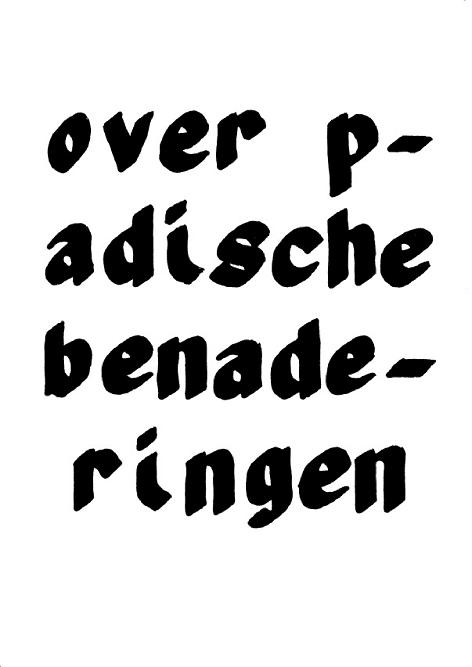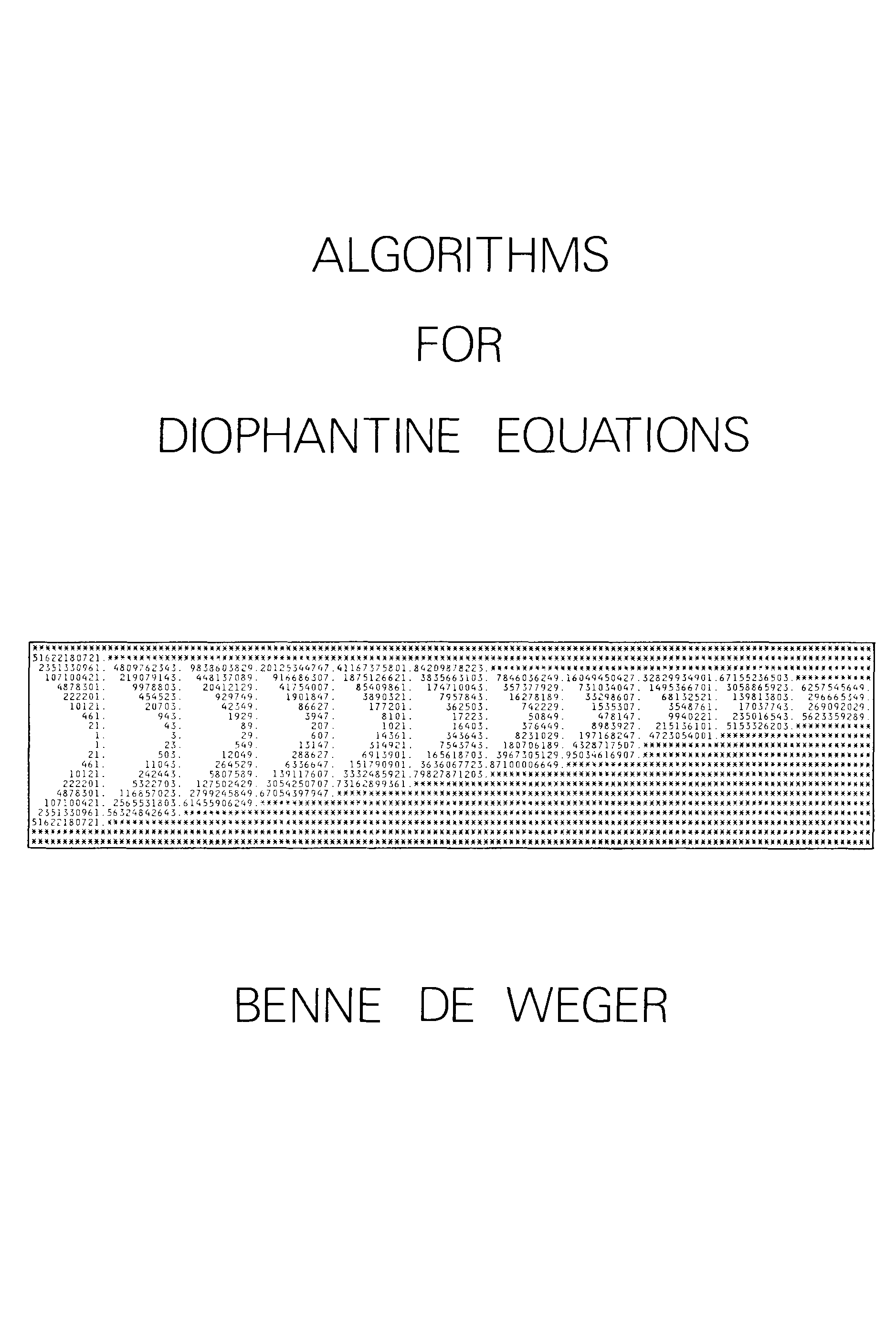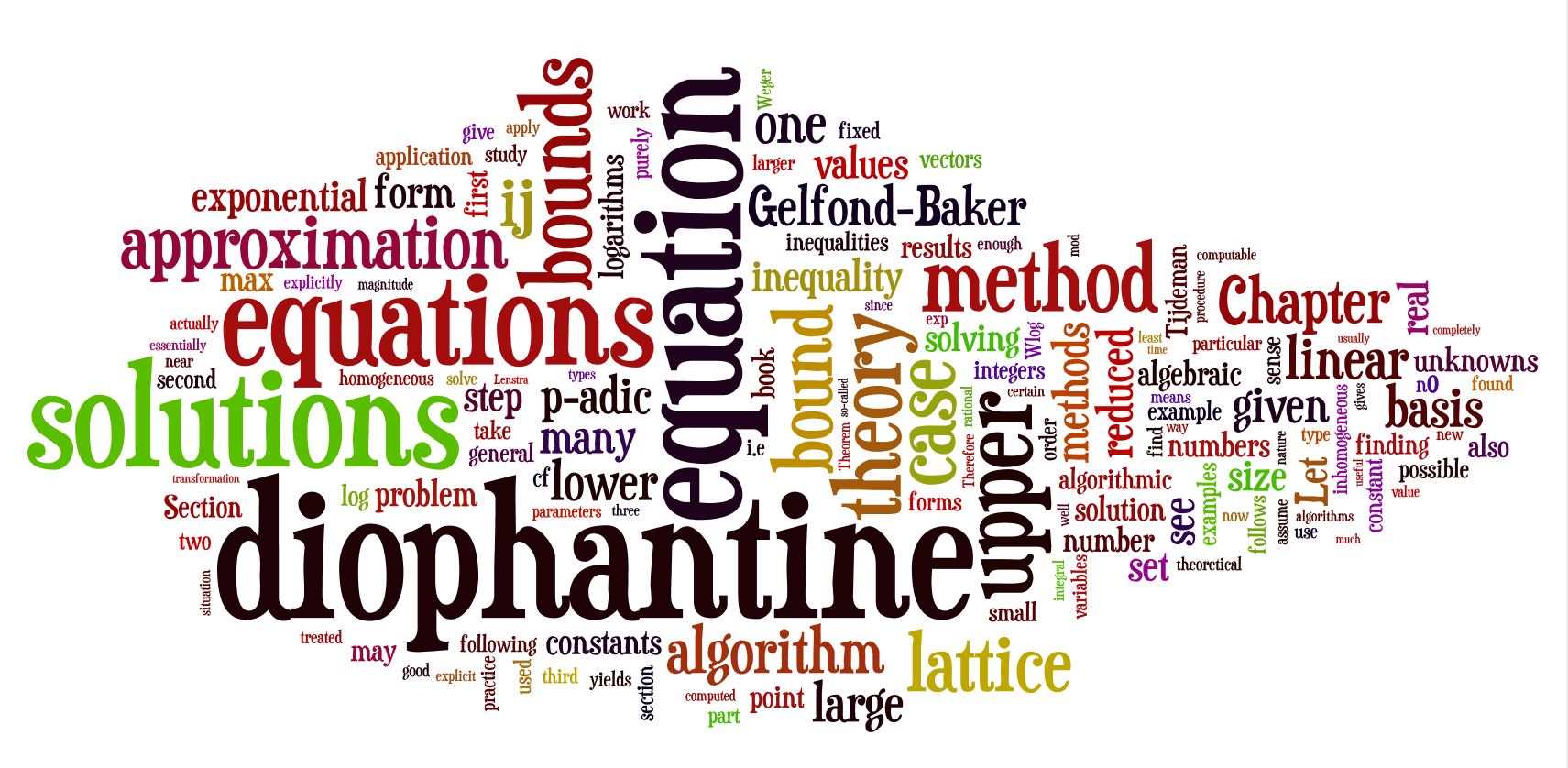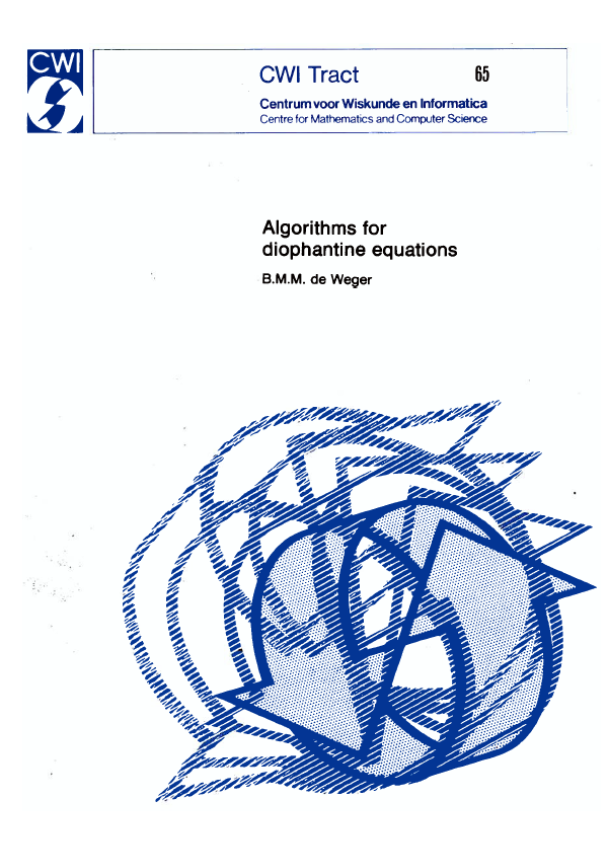
|
Over p-adische benaderingen Master thesis (in Dutch, handwritten), Leiden, 1983 The mathematically interesting parts of this thesis can be found (with a lot more) in the next paper. |
| Diophantine equations | other topics | |||||
| general | Thue and Thue-Mahler | p-adic Diophantine approximation | ||||
| exponential | elliptic etc. | powerful number sets with small diameter | ||||
| recurrences | binomial | abc conjecture | 3n+1 conjecture | |||

|
Over p-adische benaderingen Master thesis (in Dutch, handwritten), Leiden, 1983 The mathematically interesting parts of this thesis can be found (with a lot more) in the next paper. |

|
Algorithms for Diophantine equations PhD Thesis, Leiden, 1988 A slightly updated version of it has appeared as CWI Tract 65, Centrum voor Wiskunde en Informatica, Amsterdam, 1989. It is out of print, but thanks to Wil Kortsmit it is now also available as a pdf (3.1MB). 
|

|
1 + 4374 = 4375 with Q* = 1.63904.Impressive, isn't it? I challenge you all to find a better example, and throw me back to second place again.